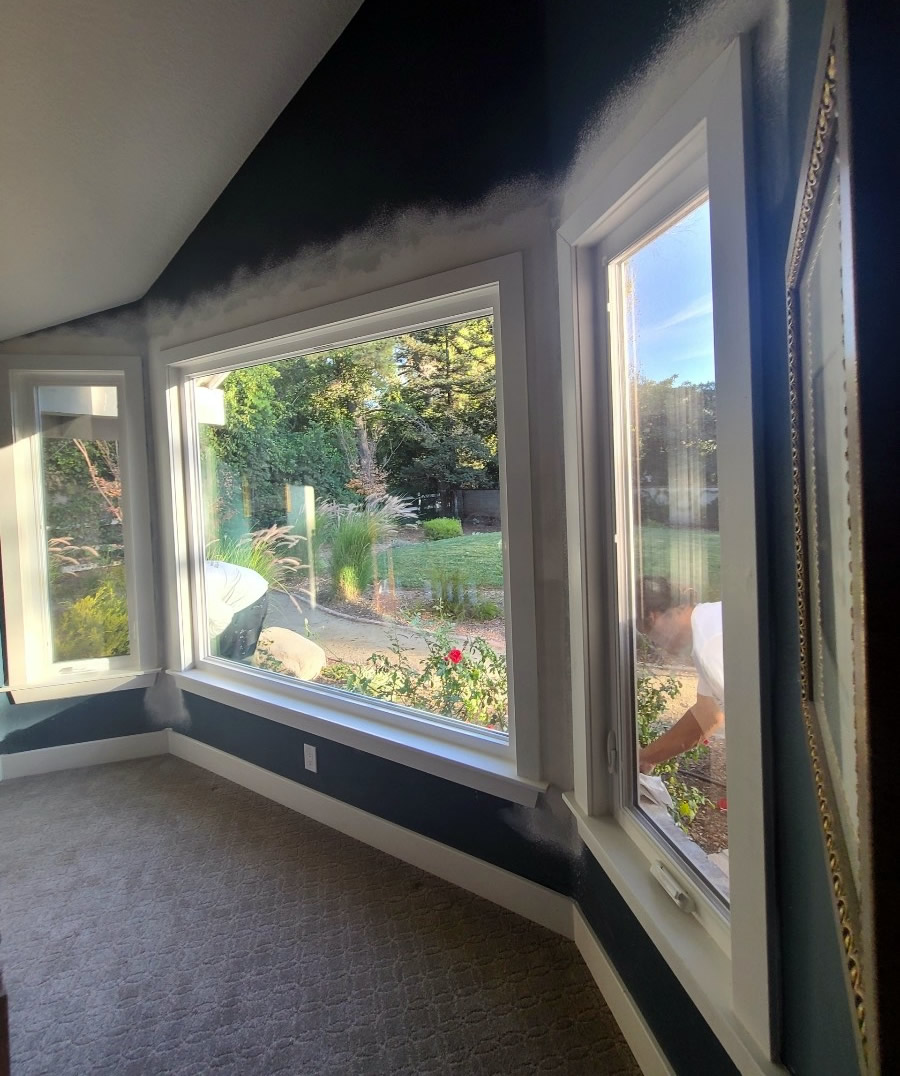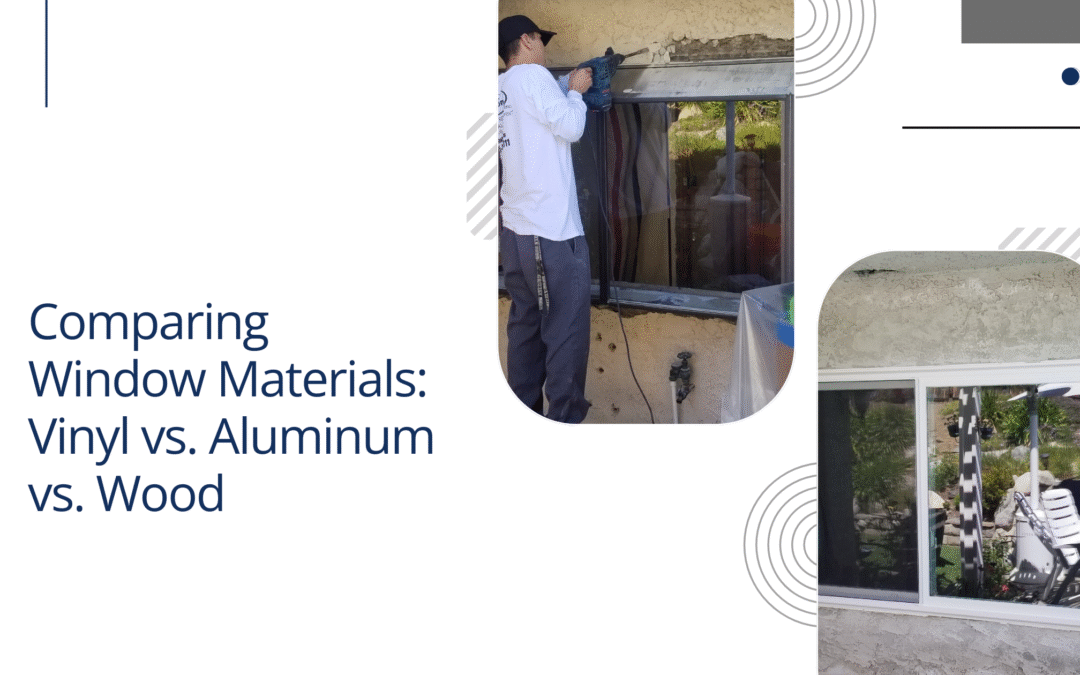- Vinyl, aluminum, and wood windows each have unique strengths in cost, durability, and appearance.
- The right choice depends on climate, style, budget, and upkeep preferences.
- My Window Solutions offers expert help and quality options for every home.
When it comes to choosing new windows for a home, the material is just as important as the style or design. Windows do more than bring light and air into a space—they provide insulation, enhance curb appeal, and impact the energy efficiency of a property. As homeowners navigate this crucial decision, understanding the differences between vinyl, aluminum, and wood window materials can help ensure a long-lasting investment that matches both functional needs and aesthetic preferences.
Vinyl vs. Aluminium vs. Wood
Choosing the right window material can significantly influence your home’s comfort, energy efficiency, and long-term value. While all windows serve the same functional purpose, the material they’re made from plays a major role in performance and appearance. This comparison breaks down the unique characteristics of vinyl, aluminum, and wood to help you make an informed decision.
Vinyl Windows
Vinyl windows have become a popular choice among homeowners, particularly in newer construction and remodeling projects. Their widespread use comes from a combination of affordability, practical benefits, and versatile design options.
Pros
Vinyl windows are known for their energy efficiency. The material itself is a poor conductor of heat, which helps maintain a consistent indoor temperature. Many vinyl window frames are designed with multiple chambers that trap air, adding to their insulation properties.
Maintenance is another key advantage—vinyl doesn’t require painting or staining and can be cleaned with simple soap and water. Additionally, these windows tend to be more affordable than other materials, making them an attractive choice for budget-conscious homeowners.
Cons
Despite their benefits, vinyl windows come with limitations. They are less customizable in appearance than wood and tend to offer fewer color choices, especially if a homeowner wants a non-white finish.
Over time, extreme heat can cause vinyl frames to warp or become brittle, which may affect longevity in regions with high temperatures. Furthermore, while vinyl is functional and practical, it may not offer the same upscale appearance that homeowners expect in luxury or historic homes.
Ideal Use Cases
Vinyl windows are well-suited for homes in moderate climates and for projects where cost-efficiency and low maintenance are priorities. They are particularly ideal for rental properties, suburban single-family homes, and developments where uniform appearance is desired. Homeowners seeking a quick, energy-efficient upgrade without extensive upkeep may find vinyl the most suitable option.
Aluminum Windows
Aluminum windows bring a sleek, contemporary look that is favored in modern architecture and commercial design. Their structural strength and minimalist profile offer both visual appeal and practical performance for certain applications.
Pros
Aluminum is a strong, lightweight material, which allows for slim window frames and larger glass panes; an advantage for homeowners wanting expansive views and a clean, modern aesthetic. The metal resists corrosion when properly coated, and the rigid frame holds up well in high-wind or coastal areas. In addition, aluminum windows are relatively easy to recycle, adding a sustainability benefit for environmentally conscious consumers.
Cons
Although aluminum offers structural advantages, it falls short in thermal performance. Metal is a natural conductor of heat and cold, which means aluminum frames can lead to energy loss unless they are thermally broken—a design feature that separates the interior and exterior metal surfaces with insulating material.
Another concern is condensation; aluminum frames can collect moisture that may lead to mold or damage over time. While durable, they are also prone to dents and scratches, which can impact appearance.
Ideal Use Cases
Aluminum windows are ideal for homes with modern architecture, buildings with large window openings, and properties in coastal or high-wind zones where structural integrity is critical. They are often chosen for loft-style residences, commercial conversions, and contemporary custom homes where design takes precedence over insulation.
Wood Windows
Wood windows have long been admired for their classic beauty and timeless appeal. Though they require more upkeep than vinyl or aluminum, their craftsmanship and warmth continue to make them a popular choice for traditional or custom-built homes.
Pros
The natural insulating properties of wood make it one of the best materials for maintaining a home’s internal temperature. Unlike metal, wood does not easily conduct heat or cold, making it energy-efficient by nature.
Wood also offers unmatched aesthetic versatility. It can be painted, stained, or finished in virtually any color or texture, making it adaptable to a wide range of architectural styles. High-quality wood windows often enhance a property’s value due to their elegant appearance and long-lasting performance when properly maintained.
Cons
Wood windows demand regular maintenance to protect against moisture, rot, and pests. Without sealing, painting, or staining at consistent intervals, the material can deteriorate over time.
In areas with high humidity or frequent rainfall, this can become a major concern. Wood windows also come with a higher price tag, both in initial installation and long-term upkeep. Additionally, sourcing wood responsibly is essential for minimizing environmental impact.
Ideal Use Cases
Wood windows are ideal for historic homes, high-end residential projects, and custom builds where appearance and character are top priorities. They complement colonial, Victorian, and craftsman-style homes and are often required in neighborhoods with strict architectural guidelines or historical preservation standards. For homeowners willing to invest in maintenance, wood delivers unmatched beauty and insulation.
Side-by-Side Comparison
To make sense of the differences between vinyl, aluminum, and wood windows, a direct comparison helps highlight key factors that influence buying decisions. Vinyl windows tend to offer the best energy efficiency at the lowest cost, making them ideal for standard applications. Aluminum, while less efficient, excels in strength and modern aesthetics. Wood remains the top choice for premium, customized looks and natural insulation.
In terms of maintenance, vinyl leads with minimal upkeep, followed by aluminum, which requires occasional touch-ups to prevent corrosion. Wood demands the most attention but rewards homeowners with classic elegance. When it comes to environmental impact, aluminum wins in recyclability, while wood offers renewability when sourced responsibly. Vinyl lags behind, as it is less biodegradable and more difficult to recycle.
Factors to Consider When Choosing

Selecting the right window material involves more than just comparing features. A homeowner must evaluate the unique needs of their property, lifestyle, and environment to ensure the best long-term investment. The following factors play a crucial role in making an informed decision.
Climate
Climate can significantly affect how well a window performs over time. For instance, wood may not be ideal in humid or rainy regions as it can warp or rot, whereas vinyl resists moisture damage. Aluminum, while durable, may not offer sufficient insulation in extremely cold areas unless it includes a thermal break.
Home Style and Aesthetics
Different materials complement different architectural styles. Wood windows are often preferred for their natural beauty and ability to match traditional or historical homes. Vinyl offers clean lines suitable for modern builds, while aluminum lends an industrial, sleek look that works well with contemporary designs.
Budget
Budget is a practical concern that impacts the scope of any window upgrade. Vinyl windows tend to be the most cost-effective, offering a balance between affordability and performance. Aluminum often comes at a moderate price but may require extra investment in insulation. Wood windows usually carry the highest initial cost due to materials and craftsmanship.
Maintenance Willingness
Some homeowners prefer low-maintenance materials that require minimal upkeep. Vinyl and aluminum windows generally need occasional cleaning and little else. Wood windows, on the other hand, require periodic staining or painting to prevent weather damage and maintain their appearance.
Local Regulations/HOA Rules
Local building codes or homeowners association (HOA) guidelines may restrict certain materials or styles. For example, some HOAs in historical districts mandate wood windows to preserve a uniform appearance. It’s essential to verify these regulations before making a final selection to avoid costly replacements or fines.
Environmental Impact and Sustainability
As sustainability becomes a growing priority for homeowners and builders alike, understanding the environmental footprint of window materials is increasingly important. Each material’s manufacturing process, recyclability, and longevity can contribute positively or negatively to overall environmental goals. Considering these factors helps align window selection with eco-conscious living.
Vinyl
Vinyl windows are made from polyvinyl chloride (PVC), a synthetic plastic that requires significant energy to produce and is not biodegradable. While vinyl is not easily recyclable, its energy efficiency during use can contribute to lower household energy consumption. However, its long-term environmental impact remains a concern due to limited post-consumer recycling options.
Aluminum
Aluminum is highly recyclable and often contains a high percentage of recycled content, making it one of the more environmentally friendly choices in terms of end-of-life disposal. However, the initial manufacturing process is energy-intensive and can generate considerable carbon emissions. Despite this, its durability and recyclability offer sustainability advantages over time.
Wood
Wood is a renewable resource and can be sustainably harvested when sourced from responsibly managed forests. It requires less energy to manufacture than synthetic alternatives and decomposes naturally at the end of its lifespan. However, wood’s susceptibility to rot and pests can shorten its usable life unless it is regularly maintained, which may require additional chemical treatments.
Why Choose My Window Solutions
Selecting the right partner for window and door replacement is essential to ensure lasting quality, durability, and aesthetic appeal. At My Window Solutions, we take pride in being a comprehensive provider, offering the perfect combination of expertise, personalized service, and a wide range of options tailored to meet the diverse needs of homeowners. Our commitment to excellence and customer satisfaction has made us a trusted choice for many.
Comprehensive Services
We provide a full spectrum of window and door replacement services, handling both retrofit and new construction projects. Our expertise spans a variety of materials, including vinyl, fiberglass, wood, and aluminum, so our clients have access to products that match their home’s style and performance goals. Whether we’re building new windows or modifying existing ones, we approach every project—big or small—with precision and care.
Expert Team
Our strength lies in our dedicated team of professionals. From our knowledgeable sales staff who offer informative, no-pressure consultations to our skilled in-house installers who deliver meticulous craftsmanship, every member of our team plays a vital role in achieving exceptional outcomes. We stay current with training and follow industry best practices to ensure that every installation meets or exceeds manufacturer standards.
Customer-Centric Approach
At the core of our business is a strong customer-first philosophy. We prioritize clear communication, transparency, and responsiveness throughout every stage of the project. Our focus on building lasting relationships, rather than just completing transactions, has helped us earn the loyalty and trust of clients who appreciate our integrity and dedication.
Local Expertise
We proudly serve Ventura County, the San Fernando Valley, northern Los Angeles, and surrounding communities with a deep understanding of the local architecture, climate conditions, and homeowner preferences. This regional knowledge allows us to recommend solutions that are both visually appealing and functionally suited to the unique needs of each neighborhood.
Proven Track Record
With years of hands-on experience and a portfolio filled with successful projects, we’ve built a reputation as a reliable name in the window and door industry. Our commitment to quality workmanship, on-time delivery, and continued support after installation has earned us praise from satisfied clients and recognition throughout the communities we serve.
Ready to upgrade your windows but not sure where to start? At My Window Solutions, we help homeowners make confident, informed decisions about window materials and designs that match their needs and vision. Contact us today to schedule your personalized consultation.


